Here are the crucial employee questions you requested...
Now more than ever, employees are leaving employers who don't show they care about the health and well-being of workers. It’s a fast-growing dimension of corporate responsibility.
As an HR executive, you hear about burnout, issues with physical and mental health as well as time management. These complex but common topics are impacting your staff and your company’s bottom line.
The good news is you can help.
Through the use of motivational interviewing—a skill used by Workbetter Wellness—you help your employees process thoughts, feelings and actions allowing them to create meaningful, positive outcomes both at work and in their personal lives. Motivational interviewing is a questioning process that builds trust and is centered around collaboration and goal setting. It helps individuals identify strengths and utilize those strengths to facilitate lasting behavior change.
Ask these 4 open-ended questions to help your employees understand the nature of their behaviors and the driving force behind wanting to change. It’s important to approach matters from a non-judgmental place; practice patience and allow your employee to ponder their responses.
As an HR executive, you hear about burnout, issues with physical and mental health as well as time management. These complex but common topics are impacting your staff and your company’s bottom line.
The good news is you can help.
Through the use of motivational interviewing—a skill used by Workbetter Wellness—you help your employees process thoughts, feelings and actions allowing them to create meaningful, positive outcomes both at work and in their personal lives. Motivational interviewing is a questioning process that builds trust and is centered around collaboration and goal setting. It helps individuals identify strengths and utilize those strengths to facilitate lasting behavior change.
Ask these 4 open-ended questions to help your employees understand the nature of their behaviors and the driving force behind wanting to change. It’s important to approach matters from a non-judgmental place; practice patience and allow your employee to ponder their responses.
1. Why do you want to change this behavior?
A desire to change a habit or pattern is deeply connected to a person’s values or beliefs. If they can make a correlation to how their habit negatively impacts their health, time with family, work, or anything else they value, they will see the importance of improving it.
2. What are some things that might happen as a result of you changing your habit?
If your employee seems a bit ambivalent about changing, have them write out a pro/con list. This is an excellent tool to help people really process the advantages or disadvantages to making a change. You can bet, if the “Pro” side is bigger, not only is there a greater chance that they will move forward, but multiple areas of their well-being will also be enhanced.
3. What are some barriers that you might encounter when trying to change?
Barriers are roadblocks that can derail someone on a path towards change. It might be a time restraint, another individual, or even another habit. Once barriers are identified, you can further investigate ways to start to plan around them.
4. How might you go about making this change?
This question gets them to think positively about what they CAN do to provoke change. It puts them in the driver’s seat and provides an opportunity for them to develop actionable steps towards their goal. It might also be beneficial to ask the follow up question, “What has helped you in the past?”, as a way for them to process prior successes and link them to new habits.
A desire to change a habit or pattern is deeply connected to a person’s values or beliefs. If they can make a correlation to how their habit negatively impacts their health, time with family, work, or anything else they value, they will see the importance of improving it.
2. What are some things that might happen as a result of you changing your habit?
If your employee seems a bit ambivalent about changing, have them write out a pro/con list. This is an excellent tool to help people really process the advantages or disadvantages to making a change. You can bet, if the “Pro” side is bigger, not only is there a greater chance that they will move forward, but multiple areas of their well-being will also be enhanced.
3. What are some barriers that you might encounter when trying to change?
Barriers are roadblocks that can derail someone on a path towards change. It might be a time restraint, another individual, or even another habit. Once barriers are identified, you can further investigate ways to start to plan around them.
4. How might you go about making this change?
This question gets them to think positively about what they CAN do to provoke change. It puts them in the driver’s seat and provides an opportunity for them to develop actionable steps towards their goal. It might also be beneficial to ask the follow up question, “What has helped you in the past?”, as a way for them to process prior successes and link them to new habits.
Before working with employees, practice motivational interviewing with someone close to you. Ask them to pick a habit that they want to improve, i.e. going to bed earlier and walk them through these questions. Please be cautious of offering your own opinion about what has worked for you or someone you know. The goal in this type of brainstorming is to empower your employee and let them decide what’s most attainable.

